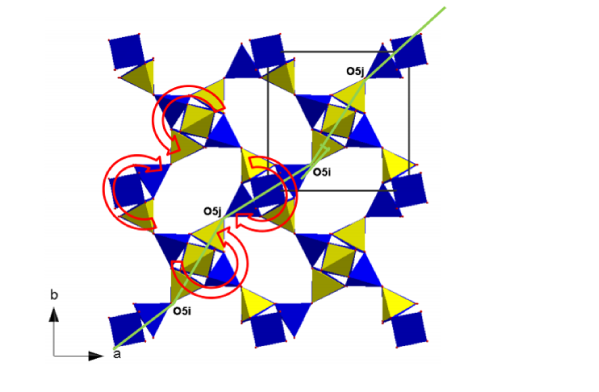
“Behaviour at high pressure of Rb7NaGa8Si12O40·3H2O (a zeolite with EDI topology): a combined experimental–computational study”
- Authors
G.D. Gatta, G. Tabacchi, E. Fois, Y. Lee
- Journal
Physics and Chemistry of Minerals
Vol.43, pp.209-216, 2016.08 - DOI
Abstract
The high-pressure behaviour and the P-induced structural evolution of a synthetic zeolite Rb7NaGa8Si12O40·3H2O (with edingtonite-type structure) were investigated both by in situ synchrotron powder diffraction (with a diamond anvil cell and the methanol:ethanol:water = 16:3:1 mixture as pressure-transmitting fluid) up to 3.27 GPa and by ab initio first-principles computational modelling. No evidence of phase transition or penetration of P-fluid molecules was observed within the P-range investigated. The isothermal equation of state was determined; V 0 and K T0 refined with a second-order Birch–Murnaghan equation of state are V 0 = 1311.3(2) Å3 and K T0 = 29.8(7) GPa. The main deformation mechanism (at the atomic scale) in response to the applied pressure is represented by the cooperative rotation of the secondary building units (SBU) about their chain axis (i.e. [001]). The direct consequence of SBU anti-rotation on the zeolitic channels parallel to [001] is the increase in pore ellipticity with pressure, in response to the extension of the major axis and to the contraction of the minor axis of the elliptical channel parallel to [001]. The effect of the applied pressure on the bonding configuration of the extra-framework content is only secondary. A comparison between the P-induced main deformation mechanisms observed in Rb7NaGa8Si12O40·3H2O and those previously found in natural fibrous zeolites is made.











